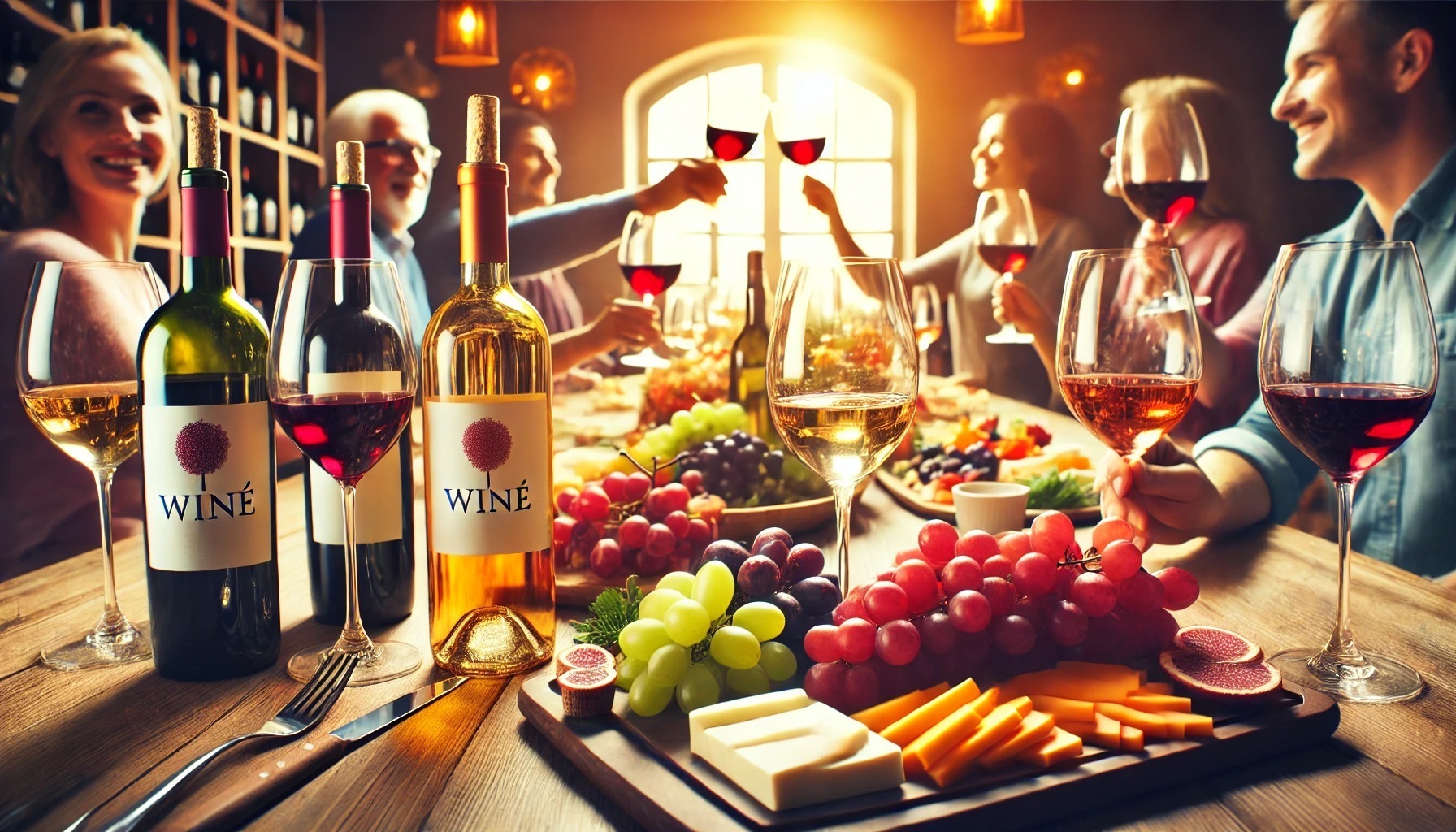
Let’s face it: choosing the right tasting wine can feel as complicated as trying to assemble IKEA furniture without instructions. You stand there, surrounded by bottles, each with a label that either looks like it belongs in an art gallery or might be written in a language you didn’t even know existed. How do you decide? Do you go by price? Color? Coolness of the name? Maybe just go for the bottle with the funniest animal on it and hope for the best?
Don’t worry—whether you’re trying to impress friends, survive a family dinner, or just look like you know what you’re doing at a fancy restaurant, I’ve got your back. Choosing a tasting wine doesn’t have to be rocket science. In fact, with a few key tips, you can select a wine that suits your taste perfectly and still manage to have fun along the way. So grab a corkscrew, and let’s dive into the world of wine.
1. Start With the Basics: Red, White, or Pink?
Before you even start narrowing things down, ask yourself: what color do you prefer? There are three main categories of wine: red, white, and rosé (or “pink” for the rest of us). Let’s break them down.
- Red Wine: Dark, bold, and full of flavors like berries, spices, and sometimes chocolate (yes, wine can taste like chocolate!). Red wines are great with red meats, hearty dishes, or, you know, just because you feel fancy.
- White Wine: Light, fresh, and crisp, white wines are often fruity and a little less intense than reds. They’re perfect for seafood, salads, or sipping on a hot day when you’d rather not get bogged down by something too heavy.
- Rosé: The middle child of the wine family, rosé is often fruity, a little sweet, and pretty versatile. It works as an all-rounder for those “I-have-no-idea-what-I’m-doing” moments. It’s also Instagram-friendly if that’s your thing.
2. Sweet, Dry, or Somewhere in Between?
Once you’ve decided on color, the next big question is sweetness. Do you like your drinks super sweet, like liquid candy, or do you prefer something a little drier?
- Sweet Wines: If you’re a fan of soda or sweet cocktails, you’ll probably enjoy a sweeter wine like Moscato or Riesling. These wines taste fruity, juicy, and almost dessert-like. They’re fun, approachable, and great for beginners.
- Dry Wines: If you’re more into coffee without sugar or you cringe at the idea of anything too sweet, dry wines will be your jam. Chardonnay (white) and Cabernet Sauvignon (red) are examples of dry wines that tend to be more serious and complex.
- Off-Dry Wines: For the Goldilocks of the wine world who wants something “just right,” off-dry wines like Pinot Grigio (white) or Merlot (red) have a hint of sweetness but aren’t overpowering. Think of them as the happy medium between too sweet and too dry.
3. Sniff Before You Sip (But Don’t Overdo It)
Now that you’ve chosen your wine, you might notice something odd happening around you. Some people will swirl their glasses, then stick their noses in there like they’re trying to smell the future. You can totally do this too (it does help). But no need to go full wine snob.

A little swirl helps release the wine’s aromas, and sniffing gives you a sneak peek of what’s to come. What do you smell? Fruits? Flowers? A campfire? Wine aromas can be weirdly specific, but the point is to get your senses involved. Plus, it’ll make you look like you know what you’re doing.
4. Pair Like a Pro
Pairing wine with food might sound intimidating, but it’s easier than you think. The basic rule is simple: match the wine’s intensity with the food’s intensity.
- Red wine goes best with strong, hearty dishes like steak, burgers, or pasta with rich sauces.
- White wine pairs well with lighter fare like chicken, fish, or anything involving lemons.
- Rosé is flexible and can work with almost anything, making it the Swiss army knife of the wine world.
If you’re feeling fancy, you can even experiment with contrasts. Sweet wines go beautifully with spicy foods (it’s like a fire-and-ice combo), while acidic wines can cut through the richness of creamy dishes.
5. Don’t Be Fooled by the Price Tag
Here’s a little secret: expensive doesn’t always mean better. You don’t have to sell a kidney to get a decent bottle of wine. In fact, some of the best wines out there are affordable. If you’re not sure where to start, ask your local wine shop clerk for a recommendation in your budget range. They’ve probably tasted most of the bottles they’re selling, so they can steer you in the right direction.
Plus, there’s nothing wrong with loving a cheap bottle of wine. It’s all about what you like, not the price tag. If your favorite wine costs $10, own it!
6. Don’t Be Afraid to Try Something New
Sticking to what you know is great, but every once in a while, it’s good to step out of your comfort zone. The world of wine is huge, with different styles, grape varieties, and regions to explore. If you always drink Chardonnay, try a Sauvignon Blanc. If you’re a Merlot lover, give Pinot Noir a whirl.
Not every new tasting wine will be a hit, but that’s part of the fun. Think of it as a tasting adventure—you’re just one glass away from discovering your next favorite.
7. Know Your Grapes (But Not Too Much)
While you don’t need to memorize every grape variety known to man, it helps to know the basics. Here are a few popular grapes to get you started:
- Cabernet Sauvignon: Full-bodied, bold, and often aged in oak barrels, giving it a rich, smoky flavor.
- Chardonnay: A white wine that can be crisp and fruity, but sometimes rich and buttery (especially if it’s oaked).
- Pinot Noir: A light red wine that’s smooth, fruity, and very easy to drink.
- Sauvignon Blanc: Zesty, citrusy, and perfect for pairing with lighter dishes or drinking on a summer day.
8. Trust Your Taste Buds
At the end of the day, the best tasting wine is the one you enjoy. Wine experts can argue all day about the perfect wine for this or that occasion, but nobody knows your taste better than you. Don’t let anyone tell you that you’re wrong for liking what you like. Whether you prefer a big, bold red or a sweet, refreshing white, your wine choice is valid.
Conclusion: Relax, It’s Just Wine
Choosing the right tasting wine doesn’t have to be a stressful experience. Stick to the basics—color, sweetness, and food pairing—and don’t get too hung up on the details. Wine is meant to be enjoyed, not to make you feel like you’re taking a final exam.
So, the next time you find yourself staring at rows of bottles, remember: you’ve got this. Whether you’re sipping on a sweet Moscato or a bold Cabernet, you’re just a swirl away from impressing yourself (and maybe your friends, too). Cheers!
[…] only problem? Picking just one. Better start practicing your wine-tasting techniques and brushing up on your wine lingo—because 2024 is going to be a delicious […]
[…] everything about owning a vineyard is hard work. One of the perks is hosting wine tastings, private tours, and events on your beautiful estate. These not only bring in extra revenue but also […]